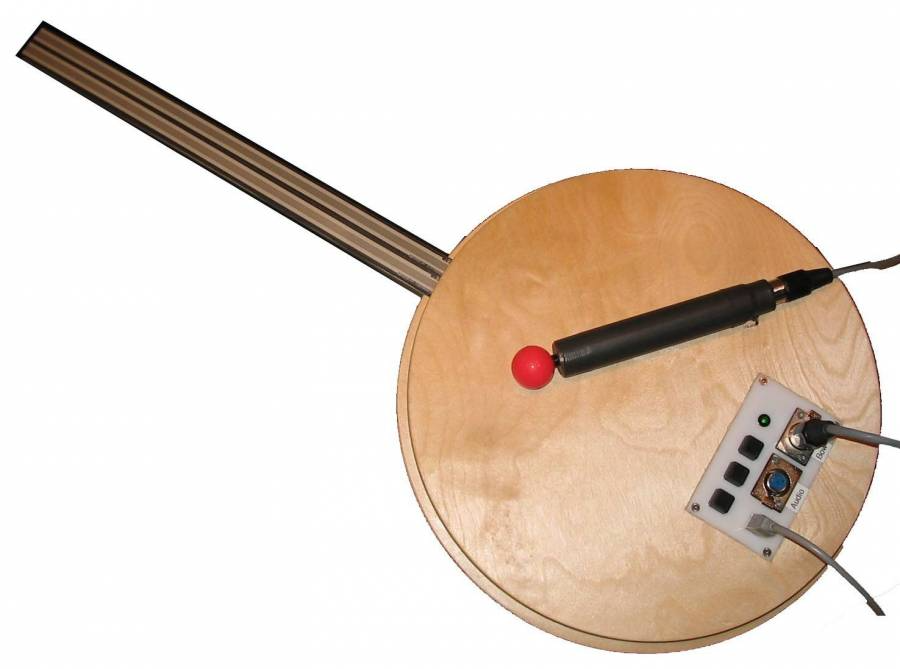
Description:
The Celloboard is a friction-based musical controller designed and built by IDMIL student Joseph Malloch. The first prototype was completed in 2004; the Celloboard II is nearing completion.
The design is intended to address two weaknesses holding back new electronic instruments from widespread acceptance: firstly, that many electronic instruments lack the sense of physicality possessed by acoustic instruments, and secondly, that the coupling between the performer’s energy input into the musical instrument system and the sonic output is often weak. The Celloboard interface consists of two main parts: a hand-held “bow” and a body with a (somewhat) flexible neck. Although the bow does not resemble a traditional violin or cello bow (it is a sensor-filled cylinder with a spring-mounted rubber ball at one end) it is intended to be used in much the same way.
The current version of the bow contains a piezoelectric contact microphone and a 2-axis accelerometer, to sense vibration and acceleration/tilt. The body of the instrument contains another piezoelectric microphone and the signal conditioning circuits, and the neck features “home-made” linear position sensors, finger pressure-sensing strips and strain gauges (to sense slight flexing of the neck).
Sensor data is communicated to a computer via USB, where mapping and synthesis take place in Max/MSP. Current synthesis approaches include scanned synthesis, granular synthesis, and audio scrubbing.
